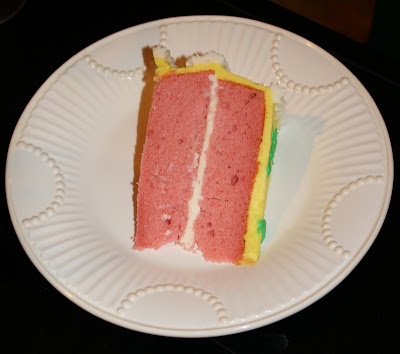I did not, however, have any crushed pineapple on hand (fresh would have been another story), so I haven't gotten to make the accompanying pineapple butter yet. I'm sure it's fantastic, though, and I'm hoping to make some tomorrow.

Coconut Bread with Sweet Pineapple Butter
Coconut Bread:
1/2 cup (1 stick) unsalted butter, melted, plus more for greasing the pan
3 cups all-purpose flour
1 Tablespoon baking powder
1 teaspoon salt
1 teaspoon ground cinnamon
1 cup brown sugar, packed
2 eggs, lightly beaten
1 teaspoon vanilla extract
Zest of 1 lemon, finely grated
1 1/2 cups unsweetened coconut milk
1 1/2 cups shredded coconut, toasted (see Note)
Confectioners' sugar, for dusting
Note: To toast the coconut, preheat the oven to 350. Spread the coconut on a cookie sheet and bake for 10 to 15 minutes, stirring periodically (10 minutes was more than enough time for my coconut). Toasting will fluff up the coconut and increase its volume (as well as make it taste better).
Preheat the oven to 375. Grease the bottom and sides of a 9 x 5-inch loaf pan with butter.
In a large bowl, mix the flour with the baking powder, salt, and cinnamon.
In another bowl, whisk together the melted butter with the brown sugar, eggs, vanilla, and lemon zest. Pour in the coconut milk and whisk together.
Pour the wet ingredients into the dry ingredients and fold everything together until you have a smooth batter (a rubber/silicon spatula works well for this). Gently fold in the shredded coconut until evenly distributed.
Pour into the prepared loaf pan and set it on a cookie sheet. Bake for 1 hour to 1 hour 15 minutes, or until a wooden toothpick comes out clean when inserted into the center of the bread. Rotate the pan periodically while baking to ensure even browning.
Cool the bread in the pan for 20 minutes. Then, when bread is cool enough to handle, turn out of pan and remove bread to wire rack or cutting board to cool completely before slicing.

Pineapple Butter:
8 oz. can crushed pineapple, drained
1 cup (2 sticks) unsalted butter, softened
Press the liquid out of the crushed pineapple using the back of a spoon. (If there is too much juice, the fruit will separate from the butter.) In a small bowl, mash the pineapple with the softened butter until well blended. A food processor is a quick alternative to making the compound butter. Mound the butter in a small serving bowl.
To serve, toast the slice of coconut bread, dust with confectioners' sugar, and serve with the creamy pineapple butter.
Source: Adapted from Tyler Florence's Real Kitchen cookbook











